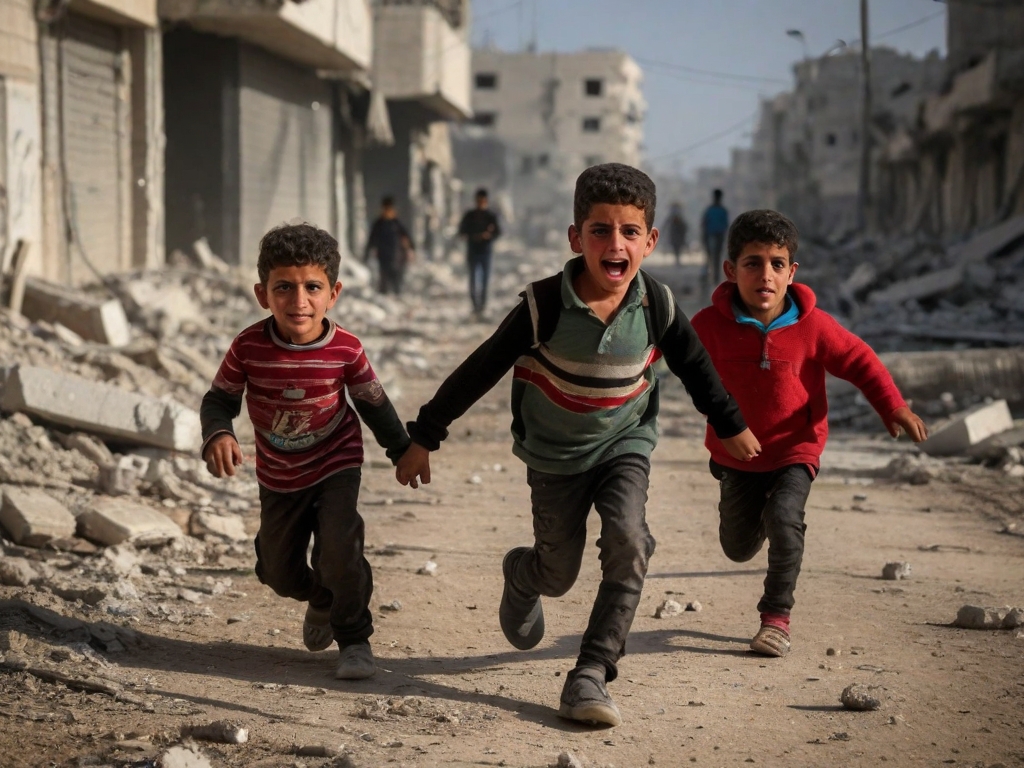Palestine
Between Attacks and Hope: Regional Implications – Gaza Strip – 4 –
4. Regional and Gaza Strip Implications.
Analysis of the Israel-Palestine conflict, with a particular focus on the Gaza Strip, requires an in-depth understanding of the geopolitical dynamics that characterize the Middle East. The complexity of the situation encompasses multiple facets, extending from the local to the regional to the global. In this article, we will focus on the regional repercussions of the conflict, analyzing how they affect and are affected by the situation in the Gaza Strip.
Security Implications
Increased violence
Violence in the West Bank is on the rise, with further waves of violence potentially triggered by attacks by militant groups. Escalating violence between Hamas and Israel could lead to increased communal violence between Palestinians and Israeli settlers, a trend that could persist in the long term.
Security in Lebanon and the Gaza Strip.
Violence could cross borders into Lebanon, especially if groups like Hezbollah decide to intervene. The situation in the Gaza Strip is particularly tense, with the Israeli siege resulting in numerous casualties and displaced persons.
Regional Dynamics
Involvement of Iran and Hezbollah.
The tension between Israel and Palestinian militant groups has a regional dimension, with Iran and Hezbollah likely to play a role in the escalation. Israeli military operations in Syria and clandestine campaigns in Iran have had regional repercussions, with limited but significant responses from Iran and its regional proxies.
Hamas allies’ response
The reaction of Hamas allies or supporters, such as Hezbollah or Iran, to a possible Israeli invasion of the Gaza Strip remains uncertain, but could increase the risk of a wider regional conflict.
Impact on U.S.-Middle East Relations.
The Abraham Agreement, orchestrated by the United States, changed the dynamics of what was possible in the Middle East. Future developments in the Israel-Palestine conflict, especially in the Gaza Strip, could have further implications for U.S.-Middle East state relations.
Additional Regional Dynamics – Gaza Strip.
Israeli-Arab Relations and the Gaza Strip.
Changes in Alliances
The dynamics of the conflict in the Gaza Strip has also helped shape relations between Israel and the surrounding Arab countries. Some Gulf states have begun to see Israel in a more favorable light, driven both by a desire to counter Iranian influence in the region and by the prospect of economic benefits from cooperation with Israel.
Impact on Peace Initiatives
Regional peace initiatives have often been hampered by instability in the Gaza Strip. Persistent violence and tensions have prevented substantial progress toward a peaceful resolution, despite the mediating efforts of various regional and international actors.
Economic implications
Economic Block
The Gaza Strip has suffered a severe economic blockade that has exacerbated poverty and unemployment. The economic situation has further inflamed tensions, making the prospect of lasting peace even more elusive.
International Aid
International aid remains a crucial component in sustaining the economy of the Gaza Strip and providing essential services to the population. However, the effectiveness of such aid is often hampered by movement restrictions and political instability.
Future Perspectives
Challenges and Opportunities
The future of the Gaza Strip is uncertain, with many challenges but also potential opportunities. The international community has a key role in supporting initiatives that promote peace and stability in the region, which in turn will have a positive impact on regional dynamics.
Role of International Mediators
International mediators will continue to play a crucial role in trying to facilitate dialogues and peace agreements between the conflicting parties, helping to shape the future of the Gaza Strip and its regional implications.
Final Considerations
The Israel-Palestine conflict, with its epicenter in the Gaza Strip, is part of a larger regional context involving many external actors, each with their own interests and goals. The potential escalation involving other states in the region makes the situation extremely delicate, underscoring the importance of a peaceful and negotiated resolution of the conflict.
<< 3. Main Actors 5. International Interventions >>


